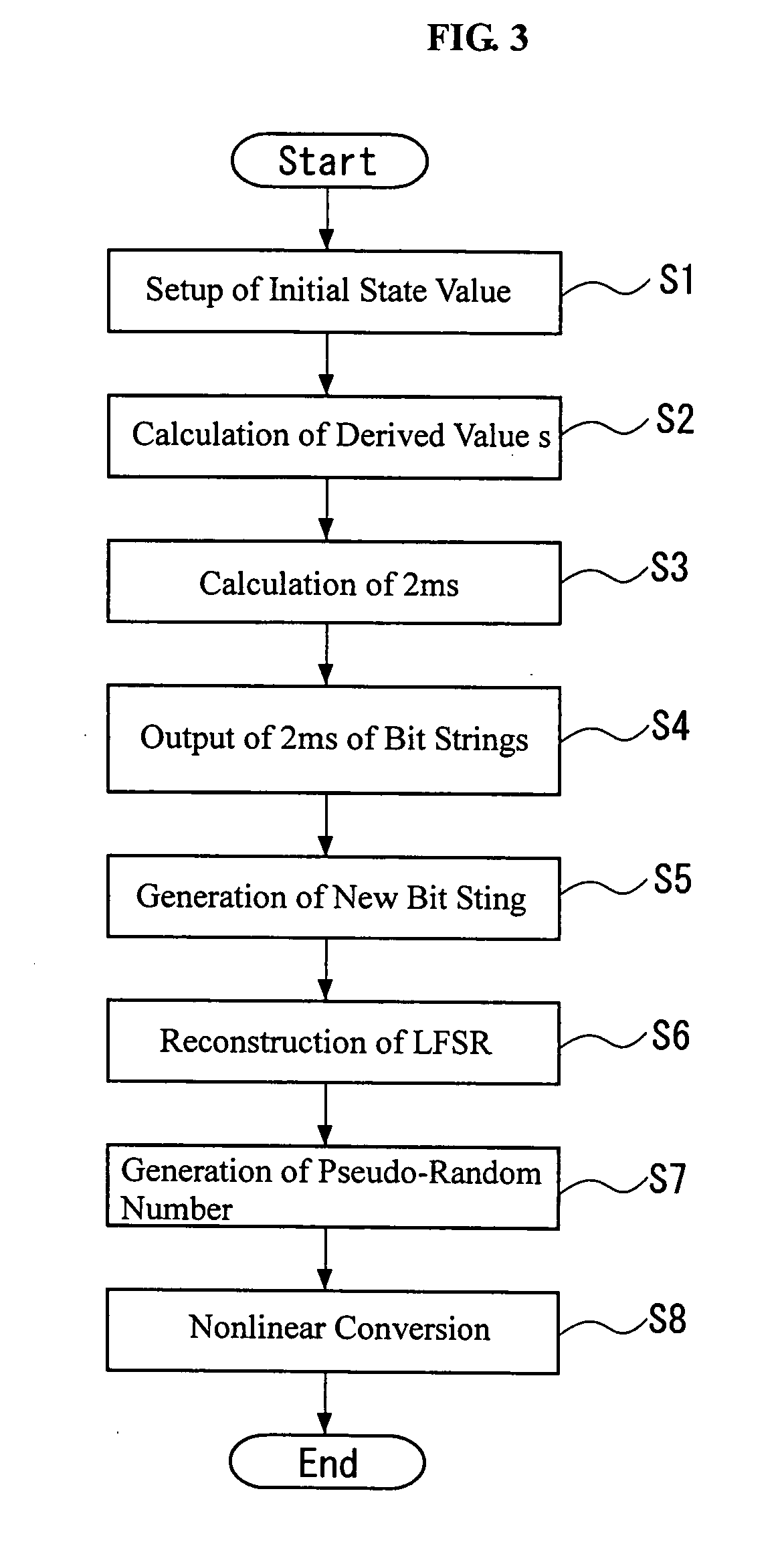Pseudo-random number generation method and pseudo-random number generator
a pseudo-random number and number generation technology, applied in the field of pseudo-random number generation method and pseudo-random number generator, can solve the problems of weak encryption strength (strength of cipher), poor security,
- Summary
- Abstract
- Description
- Claims
- Application Information
AI Technical Summary
Benefits of technology
Problems solved by technology
Method used
Image
Examples
first embodiment
[0125] The first embodiment of the present invention is explained by referring to the drawings.
[0126]FIG. 1 is a view explaining a pseudo-random number generator 1 according to the first embodiment of the invention. In the embodiment, a nonlinear-combiner-type pseudo-random number generator 1 is explained as an example of the pseudo-random number generator.
[0127] The pseudo-random number generator 1 has an initial state value setting part (not shown) for setting an initial state value based on a secret key which is given by a user, plural pseudo-random number generating parts 10 for generating pseudo-random numbers based on the initial state value received from the initial state value setting part, and a nonlinear conversion part 20 which is connected to each of output sides of these plural pseudo-random number generating parts 10 and nonlinearly converses the pseudo-random numbers outputted from each of the pseudo-random number generating parts 10.
[0128] The initial state value ...
second embodiment
[0154] Subsequently, the second embodiment of the present invention is explained by referring to the drawings.
[0155]FIG. 4 is a view schematically explaining function of a pseudo-random number generator 1 according to the second embodiment of the invention. The pseudo-random number generator 1 of the embodiment is a nonlinear-combiner-type pseudo-random number generator 1 materiarized by running a pseudo-random number program on computer hardware. In the embodiment, the generator is explained only in the case of using in an encryption device (see Description of the Related Art), and the explanation is omitted in the case of using in a decryption device because the explanation is similar to that in the encryption device.
[0156] The pseudo-random number generator 1 has a random number bit string outputting part 50, a random number bit string amplifying part 60, and a nonlinear conversion part 80, as shown in FIG. 4. The random number bit string outputting part 50 is provided with a (...
PUM
 Login to View More
Login to View More Abstract
Description
Claims
Application Information
 Login to View More
Login to View More - R&D
- Intellectual Property
- Life Sciences
- Materials
- Tech Scout
- Unparalleled Data Quality
- Higher Quality Content
- 60% Fewer Hallucinations
Browse by: Latest US Patents, China's latest patents, Technical Efficacy Thesaurus, Application Domain, Technology Topic, Popular Technical Reports.
© 2025 PatSnap. All rights reserved.Legal|Privacy policy|Modern Slavery Act Transparency Statement|Sitemap|About US| Contact US: help@patsnap.com



